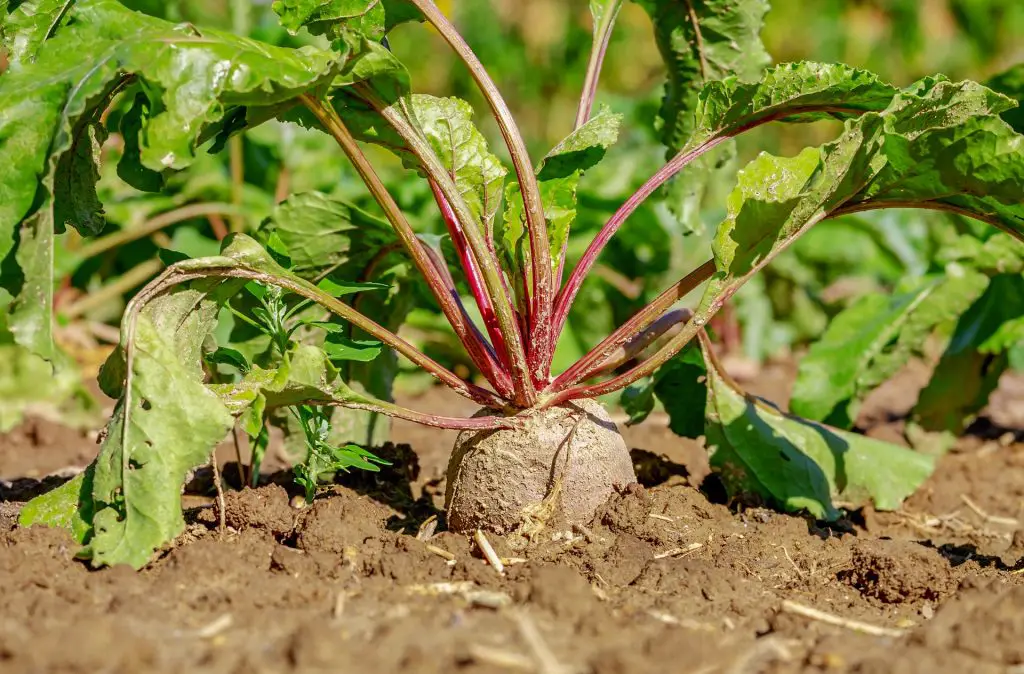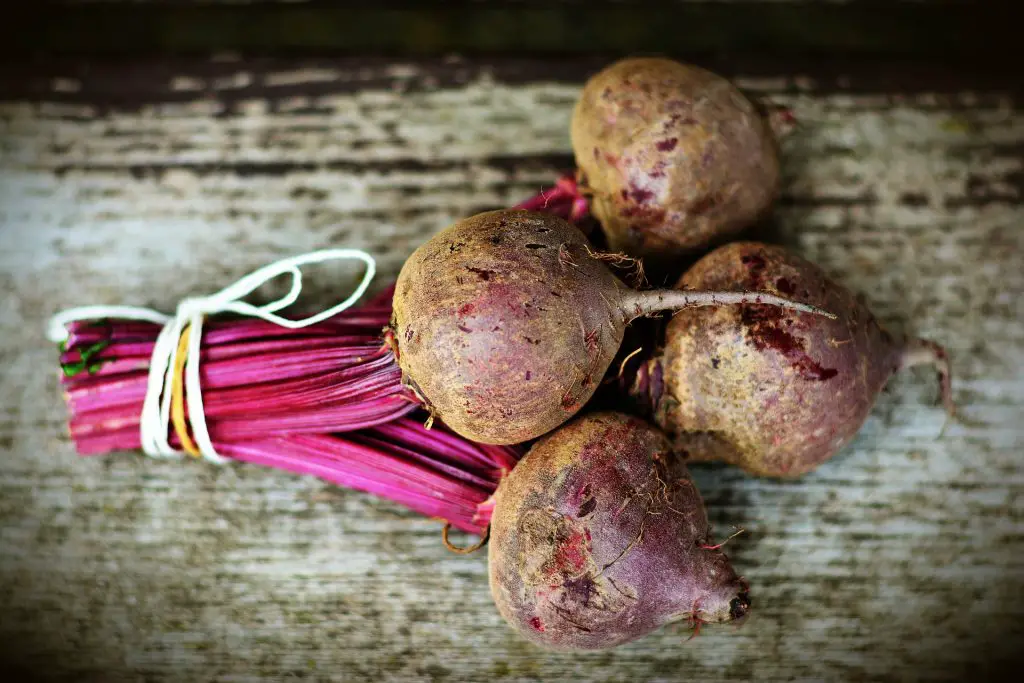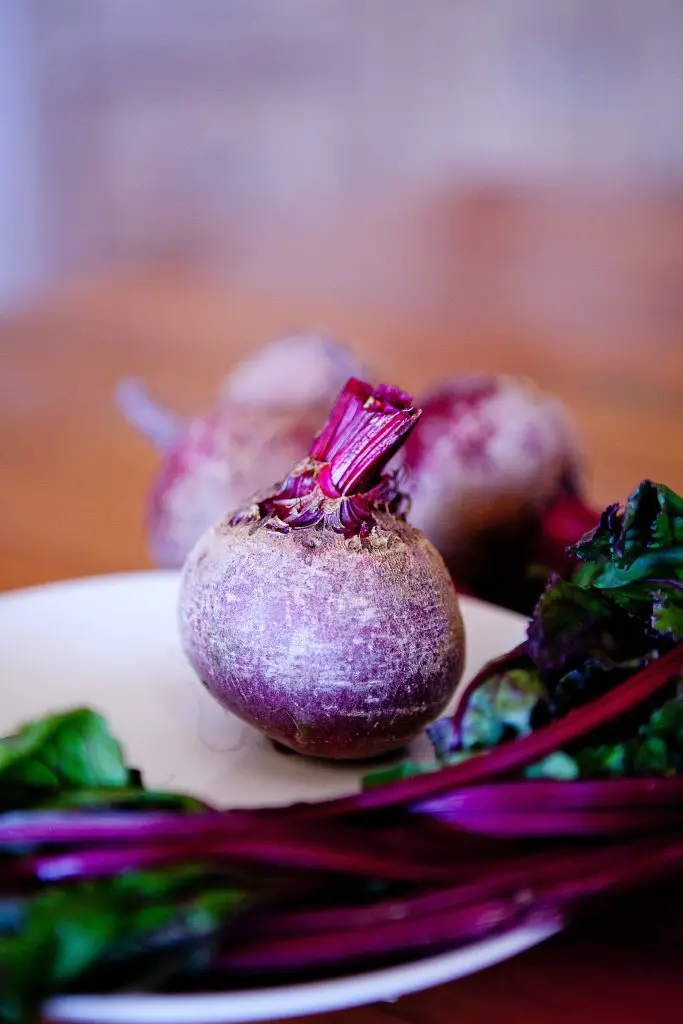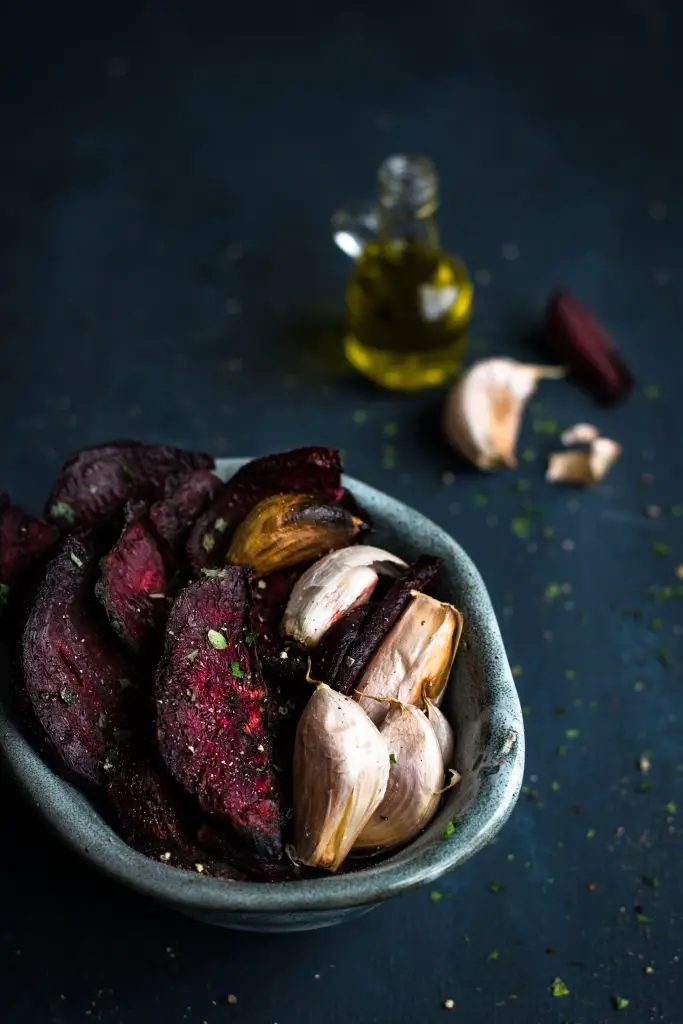Can You Grow Beetroot All Year Round? Beetroot is an incredibly useful plant in the kitchen as both the leaves and root are edible and it is available for a large portion of the year. This allows it to be used in salads, soups, dips and roasts. However, despite this it remains a largely under appreciated vegetable as most people associate it only with pickled form that can be brought in cans at the local grocery store.
Beetroot is a frost tolerant vegetable that can be grown year round in the garden provided that the temperatures do not get too low in Winter. Beetroot can tolerate temperature 15°F (-9°C) according to Oregon State University. It can be planted in Spring for a Summer harvest and also in late Summer for a harvest in early Spring or Winter.
To ensure a good harvest in early Winter it is important to plant the seeds early enough in Summer to ensure that the plant is able to develop to a sufficient size before the onset of Winter. The precise date for planting will vary from region to region depending your location. However, as a general guide somewhere around mid July to the end of July is ideal in most places.
If you plant Beetroot too late in the growing season you will not get a reasonable harvest as the plant will bolt in Spring before the roots can develop to a reasonable size.

To increase your chances of avoiding this situation it is advisable to place cloches over the vegetables. This will maintain a higher temperature for longer allowing more time for the roots to fully develop.
How Long Does Beetroot Take To Grow?
The length of time Beetroot takes to grow does vary depending upon the time of year you grow it, the variety and the size you pick the root. However, as a general rule it is reasonable to expect beetroot to be ready to harvest around 90 days from day the seed is planted.
If the Beetroot is grown over the cooler months you can expect it to take alittle longer and over winter the Beetroot may sit in the garden until need.
How to Grow Beetroot?
Beetroot is a hardy vegetable that will tolerate temperatures below freezing. However, it best sown between early Spring and mid Summer in successive sowings to ensure a constant supply of Beetroot throughout the year. In areas with milder Winters the planting season can be extended into late Summer and early Autumn.
Beetroot seed can be sown directly into the soil at a depth of 2 to 3 cm (1 inch) however, I generally recommend sowing them into modular trays undercover. There are a few reasons for this, the first is that it allows the Beetroots to be started earlier in the season as they can be sown undercover where it is warmer.

The second reason is it allows the gardener to provide greater protection from pests for the young seedlings. The third reason is that planting in trays reduces the time that the crop spends in the ground allowing you to utilise the space for other things. This is more beneficial when planting in Summer when there is a wide range of crops growing. In early Spring it is not such an issue.
The final reason is that it provides an opportunity to multi-sow the seed. This is a technique that I first learnt about from Charles Dowding, who is a well known market gardener with 30 years experience and has published several books.
The technique, as the name suggests, involves sowing multiple seeds into a single cell of a modular cell and transplanting the plants as a clump. The advantage of this technique is it really fast to plant out. Additionally, the spacing between the clumps allows weeding with a hoe making it easier to maintain the garden without sacrificing crop yield. For Beetroot 4 seeds per module is recommended, however if more plants come up simply thin the seedlings. To read more about this technique visit Charles’ website by clicking here. Alternatively, you can purchase his book from Amazon.
Seed can be purchased from Seeds Now in the US who offer several different varieties including a yellow form, or from Thompson & Morgan in the UK.
Once the seeds have been sown in trays it will take around 4 to 6 weeks before the plants are ready plant out into the garden. When planting them out select a warm sunny location as they need at least 6 hrs of sun a day. However, Beetroot can tolerate part shade.

Beetroot prefers a moist well-drained soil that is rich with organic matter. The simplest way to create those soil conditions is to prepare the soil using the No Dig method. The benefit of this is that it reduces the volume of work required to maintain a vegetable garden significantly.
To create a No Dig bed simply add a relatively thick layer of compost, 5 to 10 cm (2 to 4 inches) once a year and plant directly into the layer. The compost will act as a mulch and feed the soil. To learn more about this technique click here.
When planting the seedlings into the prepared soil a spacing of 30 cm (12 inches) between clumps is recommended. At this point you may consider sprinkling Snail pallets around the clumps to protect the young seedlings.
Once planted the beetroot needs to be watered regularly and kept relatively weed free. This will help to maintain moisture in the soil which will reduce the chances of the roots becoming woody or splitting. Many sources of information also recommend addition of fertiliser during the growing season. However, I have found it is not required if the soil has been adequately prepared prior to planting.
When growing the Beetroot in clumps you will generally find that the roots within the clumps will develop at different rates. This will allow multiple harvests of the same crop to be taken. When removing a Beetroot from a clump be sure to not disturb the other Beetroots in the clump. This is best done by twisting the root to remove it.
When selecting roots to harvest it is best to choose roots the are approximately the size of tennis ball. There is an excellent video by Charles Dowding that takes you from planting the seeds to harvesting that is well worth watching, see below.
How To Store BeetRoot
Beetroots can be stored for an extended period without a problem provided that the root is not damaged or bruised. If damage has occurred it is best to use these roots first in your cooking.
Beetroot store best in a cool moist place, around 4°C (40°F). The traditional method to store beets is in damp sand in a root cellar. A similar method may also be used for other root crops such as Carrots or Parsnips. This method works well as it mimics the conditions root crops experience in the ground. When stored using this method the roots will store for several months.
When storing them using this method there is no need to wash the roots, simply brush off the excess dirt and remove the top leaf growth. When packing them into the sand don’t pack the roots too tightly to the point where they are touching.
The reason for this is that if one of the root starts to rot it will pass it onto the next root. Ideally the insulation material around the root should be approximately 5 cm (2 inches) thick. The roots should then be placed in a cool location such as a basement, garage, or shed.
If you do not have an ideal location beets can also be stored in the refrigerator. They are best placed in a perforated plastic bag in the vegetable crisper drawer. Beets will keep in the refrigerator for 1 to 3 months. When storing them like this it is best to check them regularly to ensure that none of the roots are showing signs of deterioration.

The alternative to storing the roots whole is to pickle them. When pickling them they can either be sliced or pickled whole if they are small. There are many recipes available on the internet, an example of a typical recipe is given below.
Ingredients
- 4 beetroots
- 3/4 cup water
- 1 1/2 cups white vinegar
- 3/4 cup sugar
- 1/2 tsp peppercorns
- 1 bay leaf
- 2 whole cloves
- 1/2 tsp mustard seeds
- 1/2 cinnamon stick
- 1/4 tsp salt
Method
- Wash Beetroot thoroughly removing any dirt and excess roots and cook them in boiling water until tender.
- Once cool and remove skin by hand. As this is a really messy job it is best to use disposable gloves otherwise the Beetroot will stain your hands.
- Cut the peeled Beetroot into slices, strips or leave them whole.
- Pack the Beetroot into hot sterilised jars. When packing them be sure not to pack the Beetroot all the way to the rim of the jar. This will allow you to cover every piece of the Beetroot with the pickling solution. Any exposed beetroot will go off over time.
- To make the pickling solution place all other ingredients in a saucepan and bring to the boil and simmer for 5 minutes.
- While the pickling solution is hot pour it over the packed Beetroot until it completely covers it.
- Seal and store in a cool place.
